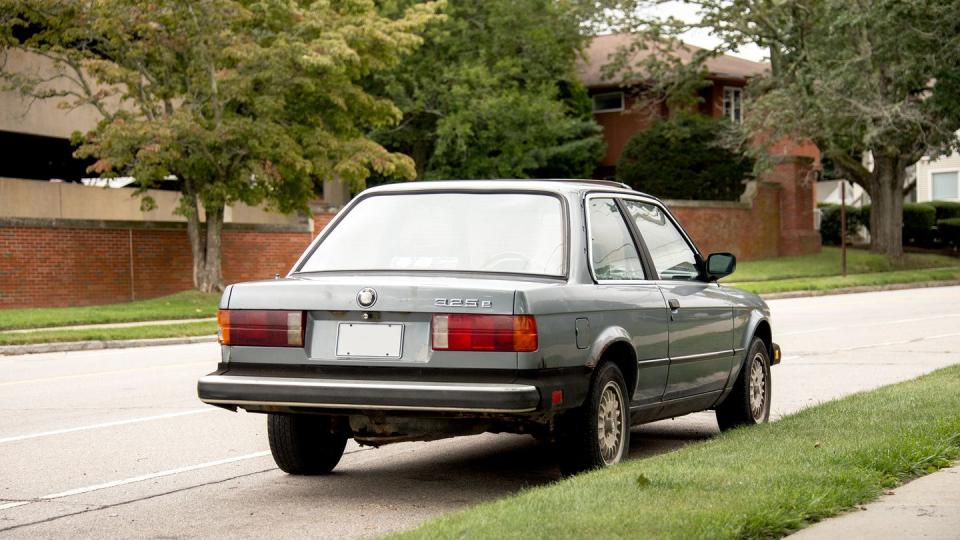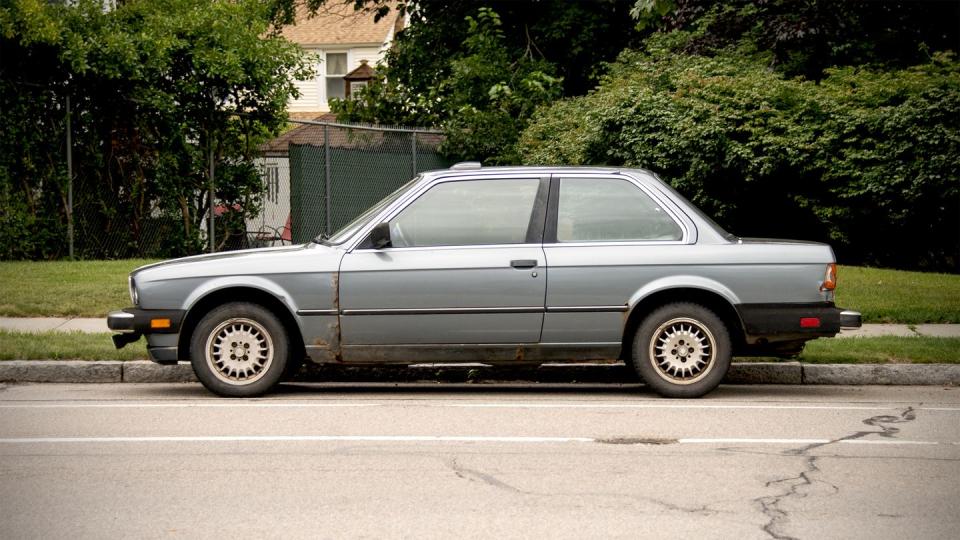We Spotted This BMW 325e on the Street

BMW may have kicked off the 3-Series with the E21 generation for the 1977 model year stateside, as a spiritual successor to the 2002. But it wasn't until the next-generation E30 that the US market saw some real variety in engines and bodystyles, albeit without a longroof option.
The E30 generation, which landed for the 1984 model year, is where the 3-Series really kicked things off, arriving just in time for the worst days of Malaise to be in the rearview mirror.
The changes in exterior design between the two generations could be safely called evolutionary today, keeping the familiar boxy look.
The two-door layout continued to be a popular base model bodystyle, while the four-door sedan became a real alternative overnight to the more expensive 5-Series, laying the foundation for further 3-Series sales success in North America. A true convertible also turned the E30 into a luxury cruiser—something the previous-gen E21 Bauer conversions never quite managed.
While the European market kicked things off with the 316i, featuring a 1.8-liter inline-four underhood, the base model stateside was badged as the 318i, featuring a slightly more powerful version of the same M10 engine.

But unlike with the E21, North American buyers of the E30 could get an inline-six underhood as well, with the 325e promising greater efficiency on the side.
The 2.7-liter M20B27 inline-six arrived in 1984, offering 121 hp and 170 lb-ft of torque.
"Its sophisticated fuel-injected engine, the Eta, puts 20% more horsepower and 65% more torque under the 3-Series hood," BMW ad copy of the time promised. "For unflagging zest on the open road and significantly more low-rpm power in city driving."

 Yahoo Autos
Yahoo Autos 